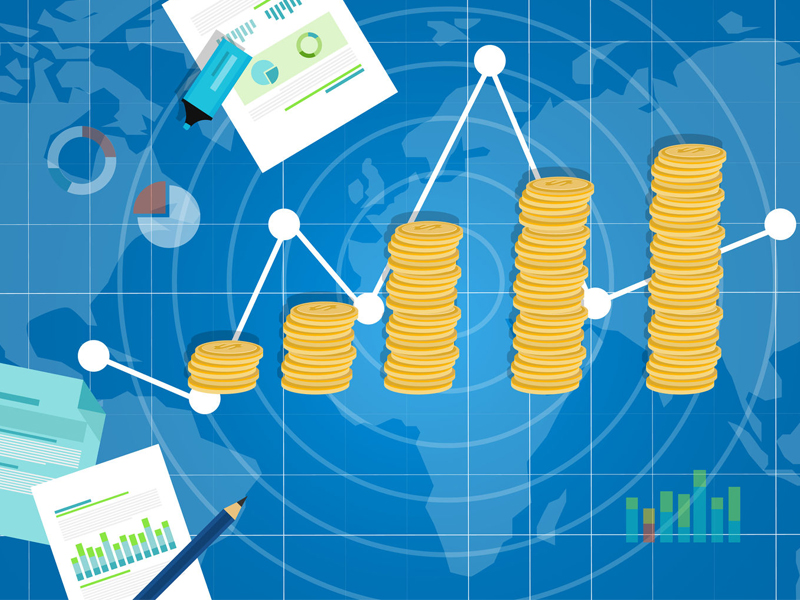
The current era of low interest rates creates a challenge for most financial advisors and financial planners to deliver the lower-risk, income-generation component of their clients’ retirement portfolios. However, this situation may cause the use of higher-risk and undesirable strategies that puts clients’ portfolios at greater risk.
An alternative strategy is to invest in elite businesses that pay steady and rising dividends. What are elite businesses? They are usually businesses that have a durable competitive advantage over their competitors. Some examples include: Walmart Inc., with its huge global distribution network that allows it to sell goods at unbeatably low prices; Coca-Cola Co., which has a logo and name that’s recognized with quality soda all over the world; and McDonald’s, which has size and global reach because it runs the best business in fast-food.
A 2012 research study by investment research firm Ned Davis Research Inc., based in Venice, Fla., shows why a company’s dividend policy is a key indicator on whether you should invest in it or not. This study analyzed the returns of various types of stocks within the benchmark S&P 500 composite index from 1972 to 2010. Stocks were placed into the following categories and analyzed by their average annual returns:
- Companies that were paying dividends and increasing them.
- Companies that were paying dividends, but not increasing them.
- Companies that were reducing or eliminating dividend payments.
- Companies that didn’t pay a dividends.
The study found that companies that were increasing their dividend payments returned an average of 9.6% a year. Companies that were paying dividends but not increasing them returned an average of 7.4% a year. On the other hand, companies that didn’t pay dividends returned an average of 1.7% a year while companies that were cutting or eliminating their dividends produced a loss of 0.5% a year.
The conclusions of this almost 40-year study are clear: As the ability to pay dividends increases, returns go up. Conversely, as the ability to pay dividends declines, so do returns. Furthermore, continuously rising dividends is a mark of business excellence that translates into big shareholder returns.
What are the considerations for advisors and financial planners to use this strategy for their clients?
1. As a rule of thumb, look for businesses that, at a minimum, have increased their dividends for at least 10 years in a row as only businesses with durable competitive advantages can pay increasing dividends for more than a decade. Only 5% of publicly listed companies can meet this high standard of quality. Obviously, the longer the number of consecutive years, the safer the investment will be.
2. Even though these are “elite businesses,” you still should consider buying them at bargain prices. Every company, no matter how good, suffers a share-price selloff due to short-term, solvable problems or because the overall stock market goes down in value.
When an elite dividend-payer’s shares suffer a decline of more than 15%, consider them to be “on sale” and buy them for your clients. Remember that if you buy one of these stocks at $50 a share and it pays an annual dividend of $2 a share, then the yield is 4%. If this stock declines to $40 a share with the same $2 a share annual dividend then the yield becomes 5%.
Finally, data show that elite businesses’ stock values usually recover. For example, Procter & Gamble Co.’s (P&G) stock price fell by 30% to US$45 from US$65 during in 2008-09. However, during the next five years, P&G continued to increase its annual dividend; by 2014, its stock price hit US$80, giving investors a great yield if they had purchased the stock at US$45. This would’ve resulted in capital gains on the stock price and annual dividend income.
3. Don’t chase yield for your clients. Elite businesses don’t necessarily pay the highest annual dividends. Usually, these dividends are in the 2%-5% range, but they are the most consistent and reliable. Some companies pay dividends of 6%, 8%, 10% or even 12%, but these are usually risky and subject to volatility. For example, some companies invest in oil or real estate and pay dividends out of production or rent, but they can’t keep paying the high dividends when prices fall.
4. Owning stock in an elite business is a good hedge against inflation because its strong brand and loyal customer base will allow the company to raise prices along with inflation. Consequently, the business’s dividend often will increase at a faster rate than inflation, so the value of the income stream remains intact.
As the Ned Davis Research analysis shows, investing in elite businesses that pay increasing annual dividends is a strategy that will deliver the required consistent and relatively safe returns for your clients’ retirement portfolios.
